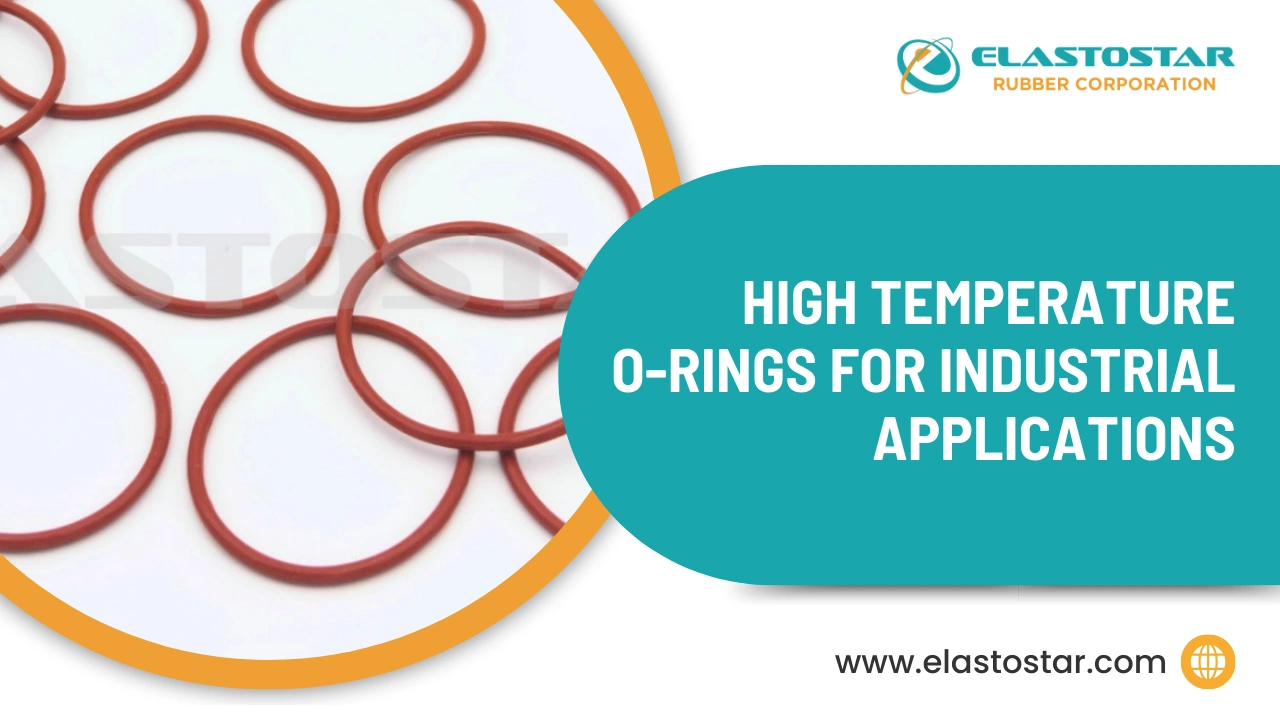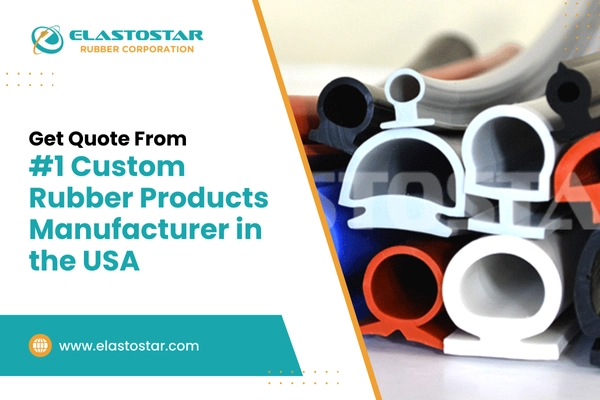ASTM D2000 is a standard that helps classify and specify rubber materials based on their performance properties, such as durability, hardness, and resistance to heat or chemicals. This standard ensures that the right type of rubber is used for specific applications, particularly in industries like automotive and aerospace.
In this blog, we will explore the key aspects of ASTM D2000 and its significance in ensuring the quality of rubber materials.
Table of Contents
What is ASTM D2000?
ASTM D2000 is a standard that helps classify and specify rubber materials based on their performance properties, such as durability, hardness, and resistance to heat or chemicals. This standard ensures that the right type of rubber is used for specific applications, particularly in industries like automotive and aerospace.
The ASTM long form stands for the American Society for Testing and Materials, an organization that develops global standards. ASTM D2000 is part of the ASTM D series, which focuses on ensuring that rubber materials meet the necessary requirements for quality and reliability in various industries.
ASTM Specifications and Their Importance
ASTM specifications are guidelines that ensure rubber products meet certain quality and performance standards. These specifications help manufacturers maintain consistency in the materials used across different applications. For example, correct O-ring sizing is critical in many applications. Learn more about the various size standards in our article on O-Ring Size Standards & International Size Charts.
Following material standards ASTM is essential for ensuring that products are reliable and perform as expected, especially in industries like automotive and aerospace, where precision is key.
The term IAW spec (In Accordance With Specification) means that the product adheres to the specific requirements set by standards like ASTM D2000, ensuring the rubber materials meet the necessary performance criteria.
Understanding Material Classification in ASTM D2000
Material Grade, Type, and Class
In ASTM D2000, rubber materials are classified by grade, type, and class, which define their performance characteristics and suitability for specific applications. These details are outlined in the material spec sheet to help users select the appropriate material.
Here’s an example breakdown:
| Grade | Type | Class | Description |
| M1 | A | 1 | High-temperature-resistant rubber |
| M2 | B | 3 | Low-temperature-resistant rubber |
| M3 | C | 5 | Oil-resistant rubber |
- Grade: Represents the material’s quality and performance level.
- Type: Defines the rubber’s resistance to heat and fluids.
- Class: Refers to material properties like tensile strength and hardness.
Durometer and Tensile Strength
In ASTM D2000, both durometer (hardness) and tensile strength are critical properties used to classify rubber materials. These characteristics help ensure that the material can withstand the specific demands of its intended application, such as resistance to deformation or breaking under stress.
| Durometer (Hardness) | Tensile Strength (MPa) |
| 50-60 Shore A | 10-12 |
| 60-70 Shore A | 12-15 |
| 70-80 Shore A | 15-18 |
- Durometer: Measures the hardness of the rubber. A higher Shore A number indicates a harder material.
- Tensile Strength: This represents the maximum stress the rubber can withstand before breaking, measured in megapascals (MPa).
These properties are crucial in the specification of rubber products because they determine the material’s durability and resistance to wear, compression, and environmental factors. Selecting the right durometer and tensile strength ensures that the rubber performs reliably under specific conditions.
For more insights into materials used in extreme conditions, check out Benefits of Platinum Cured Silicone Rubber & Application.
How to Read an ASTM D2000 Specification?
Reading an ASTM D2000 specification involves understanding the key components in the code, which describe the material’s performance characteristics.
- Type and Grade: The first part of the specification code indicates the type (resistance to heat, fluids, etc.) and the grade (performance level) of the rubber.
- Durometer and Tensile Strength: The numbers that follow describe the material’s durometer (hardness, measured in Shore A) and tensile strength (measured in MPa).
- Suffixes: Letters and numbers at the end of the code indicate additional properties, such as resistance to oils or other environmental factors.
| Example Code | Meaning |
| M2BG714B14 | Type 2, Grade B, Durometer 70, Tensile Strength 14 MPa |
| EO14 | Oil-resistant suffix |
| EO34 | Additional suffix for oil-resistant materials |
Spec’d Meaning
The term spec’d refers to a material being specified to meet the requirements set in ASTM D2000. This ensures that the product performs as expected under certain conditions.
Importance of the Material Spec Sheet
The material spec sheet is crucial for understanding all the details of the ASTM specification. It provides complete information about the rubber material’s properties, ensuring the correct material is chosen for specific applications, in line with ASTM D2000 standards.
Special Requirements and Suffixes in ASTM D2000
In ASTM D2000, suffixes indicate special requirements such as resistance to heat, oils, or fuels. These suffixes are listed at the end of the material’s specification code on the material spec sheet, helping users identify key performance properties. For example, EPDM rubber is widely used for its superior resistance to various environmental factors. Learn more in our article on EPDM Rubber: Meaning, Benefits, Applications.
Common Suffixes and Their Meanings
| Suffix | Meaning |
| A | Heat resistance |
| B | Low-temperature resistance |
| EO | Oil resistance |
| F | Fuel resistance |
These suffixes ensure that the specification rubber meets the required ASTM D2000 standards for specific applications.
ASTM D2000 in Different Types of Industries
ASTM D2000 is applied across various industries to ensure rubber materials meet specific standards for performance and safety.
- Automotive Industry
Used for components like seals, gaskets, and hoses that require resistance to extreme temperatures, oils, and mechanical stress. - Industrial Manufacturing
Ensures rubber materials can handle harsh environments, chemical exposure, and mechanical wear in industrial machinery and equipment. - Aerospace
Rubber materials must meet stringent specifications for durability and reliability in high-stress, high-altitude conditions. - Oil and Gas
Rubber products like seals and gaskets must resist exposure to fuels, oils, and extreme pressures.
Why is ASTM Spec Compliance Critical?
- Ensures specification rubber products meet safety standards.
- Guarantees long-term performance and durability.
- Reduces the risk of material failure in demanding environments.
Why Choose Elastostar Rubber Corporation for ASTM D2000 Compliant Rubber Materials?
We Elastostar Rubber Corporation offer high-quality rubber materials that fully meet ASTM D2000 standards. Our materials are rigorously tested for durability and performance, ensuring they can withstand extreme temperatures, chemicals, and mechanical stress across industries like automotive, aerospace, and industrial manufacturing.
We provide detailed material spec sheets for easy verification of compliance, and our team is available for technical support to help you choose the best material for your application.
For reliable, ASTM D2000 compliant solutions, Contact Us today and let us assist with your specific needs.
Recommended Reads
- Why Medical Industry Preferred Silicone Tubing?
- What Material is Silicone: Rubber, Elastomer, or Polymer?
- Advantages & Disadvantages of Silicone Rubber

Conclusion
Adhering to ASTM D2000 standards is vital for ensuring that rubber materials meet specific performance and safety requirements across various industries. The material spec sheet is key to verifying compliance with these standards, and ensuring the right material is selected for the job. Following ASTM specifications helps guarantee consistent quality, reliability, and long-term durability in rubber products.
By using the correct specifications, manufacturers can avoid material failures and improve product performance. This also ensures that products meet industry requirements and customer expectations.
FAQs
1. What is the ASTM D2000 standard classification system for rubber products in automotive applications?
ASTM D2000 is a system for classifying rubber materials based on properties like heat resistance, oil resistance, and tensile strength. It ensures that rubber products meet the performance requirements of the automotive industry.
2. Why choose Elastostar for ASTM D2000 rubber materials?
Elastostar Rubber Corporation offers high-quality rubber materials that meet ASTM D2000 standards, ensuring performance and durability for various applications, including automotive and industrial sectors.
3. What is the classification of ASTM D2000?
ASTM D2000 classifies rubber using type, grade, and class, which define its resistance to environmental factors like heat and fluids, as well as physical properties such as hardness and tensile strength.
4. What is the difference between ASTM D2000 and SAE J200?
Both ASTM D2000 and SAE J200 are standards for classifying rubber materials. SAE J200 is mainly used in the automotive industry, while ASTM D2000 is a broader standard applied across multiple industries, including automotive.
5. What is the ASTM tensile test standard for rubber?
The ASTM tensile test for rubber is covered by ASTM D412. It measures the rubber’s tensile strength, elongation, and its ability to withstand tension, ensuring material durability and performance.
6. How does Elastostar ensure ASTM compliance?
At Elastostar Rubber Corporation, we rigorously test our rubber materials to ensure they fully comply with ASTM D2000 specifications, providing reliable solutions for demanding environments.




